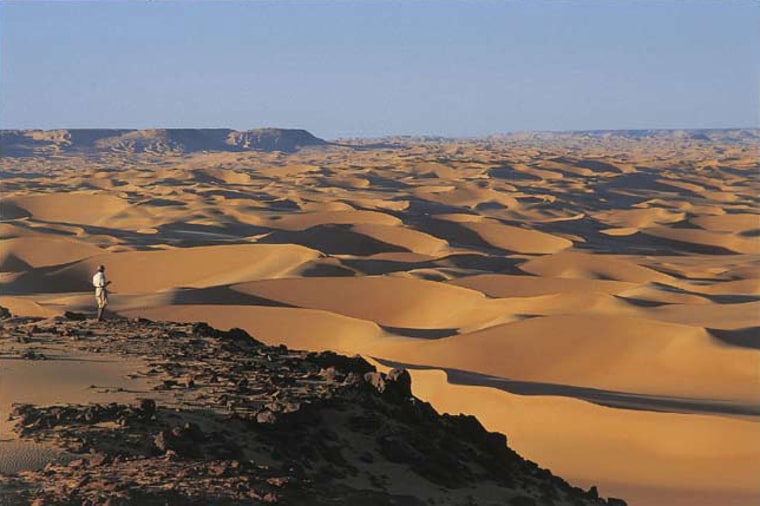Sweeping sands across the Sahara and other dune expanses are blown by more than just wind, scientists have discovered. Powerful electric fields spring up near the desert floor and propel sand grains into the air.
By accounting for this electricity, researchers say they can design better climate change models, and even explain features of the dust on Mars.
Scientists have long been at a loss to explain why sand sweeping across the desert doesn't bounce higher when the wind gets stronger. But when researchers at the University of Michigan made the first calculations of electricity's role in this dance of particles, they were finally able to match their models with observations.
Charged up
As wind forces sand to scrape over Earth's surface in a process called saltation, the friction causes the sand particles to pick up loose electrons from the ground, giving them a negative charge and leaving the surface with a positive charge, the researchers found.
"It's sort of like when you stroke your cat and feel little sparks, or run a balloon on your head to make your hair stand up," said Jasper Kok, a graduate student in applied physics at the University of Michigan, who led the study with his advisor, Michigan atmospheric scientist Nilton Renno.
The research will be published in the January 11 issue of the journal, Physical Review Letters.
The separation of charges creates an electric field that can reach strengths of 100,000 to 200,000 volts per meter at a centimeter from the surface. This field in turn draws even more sand up into the air because the positively charged ground particles are attracted to the floating negative ones.
The electric field also explains why the skipping particles do not reach greater heights when the wind blows faster.
"Now we think that as the wind speed increases, so does the electricity, and they sort of cancel each other out," Kok said. "The bouncing sand is electrically attracted to the surface. We were very excited when we plotted that graph and it all matched up."
Sculpting dunes
Saltation is the force that forms sand dunes, sculpts rocks and causes erosion.
"This finding could potentially shed more light on the physics of all these processes," Kok said.
The discovery is particularly important to climate science. When the sand grains bounce on the desert soil, they kick up fine bits of dust that seed clouds. Existing climate models can't accurately describe how dust gets released into the atmosphere.
"We discovered another piece of the puzzle of the physics of emission of dust into the atmosphere," Kok told LiveScience. "This increased understanding should allow us to better model how this dust is being emitted. It should ultimately lead to better climate models."
Mars mystery
The electricity may also explain a misunderstood feature of Mars — the high amounts of oxygen released when the planet's sand is mixed with water.
Scientists once thought the oxygen might be a signature of life on the red planet, said Renno, who is a co-investigator on NASA's Phoenix and Mars Science Laboratory missions to Mars. But ultimately studies revealed that life wasn't behind the oxidation.
Renno suggested that the movement of dust on the planet stirs up electric fields that break down water vapor and produce hydrogen peroxide, a molecule that breaks down to release oxygen. He said the red planet's fields may be so strong that they produce sparks at the surface
